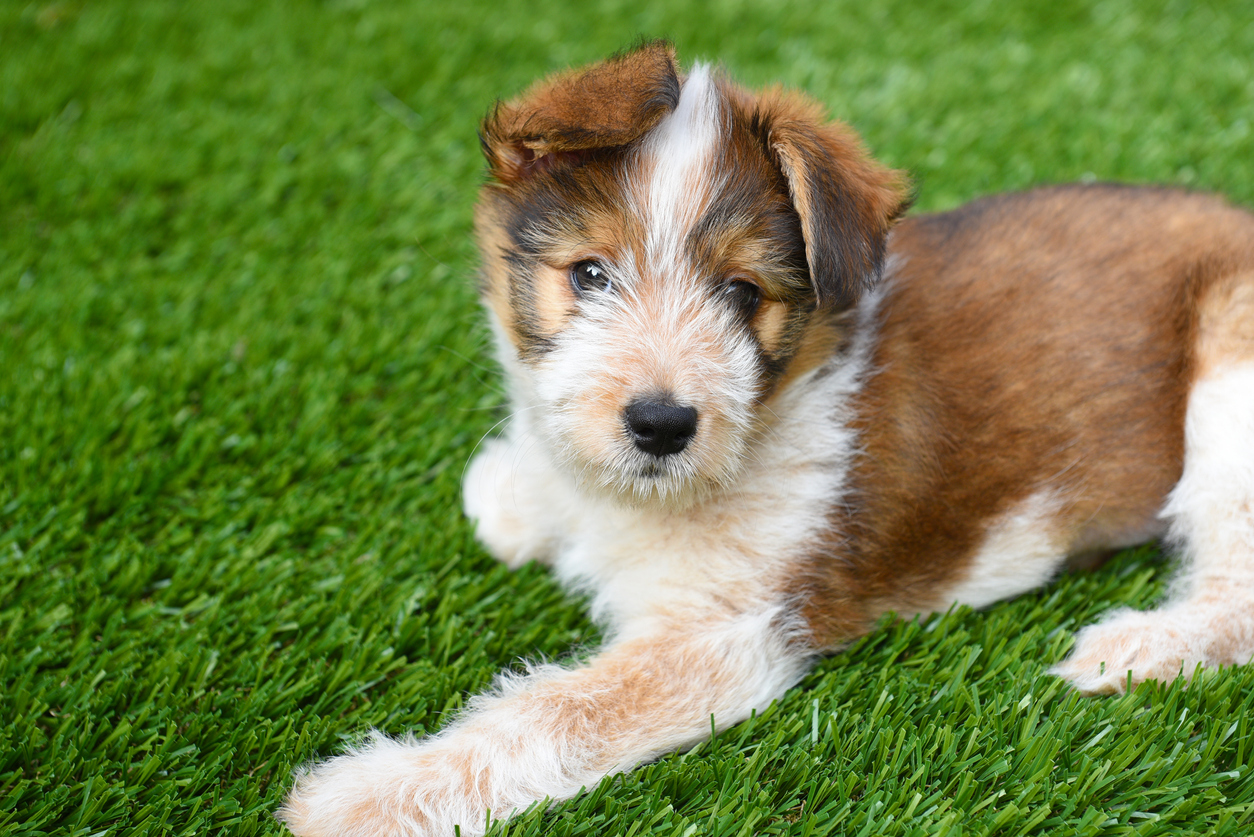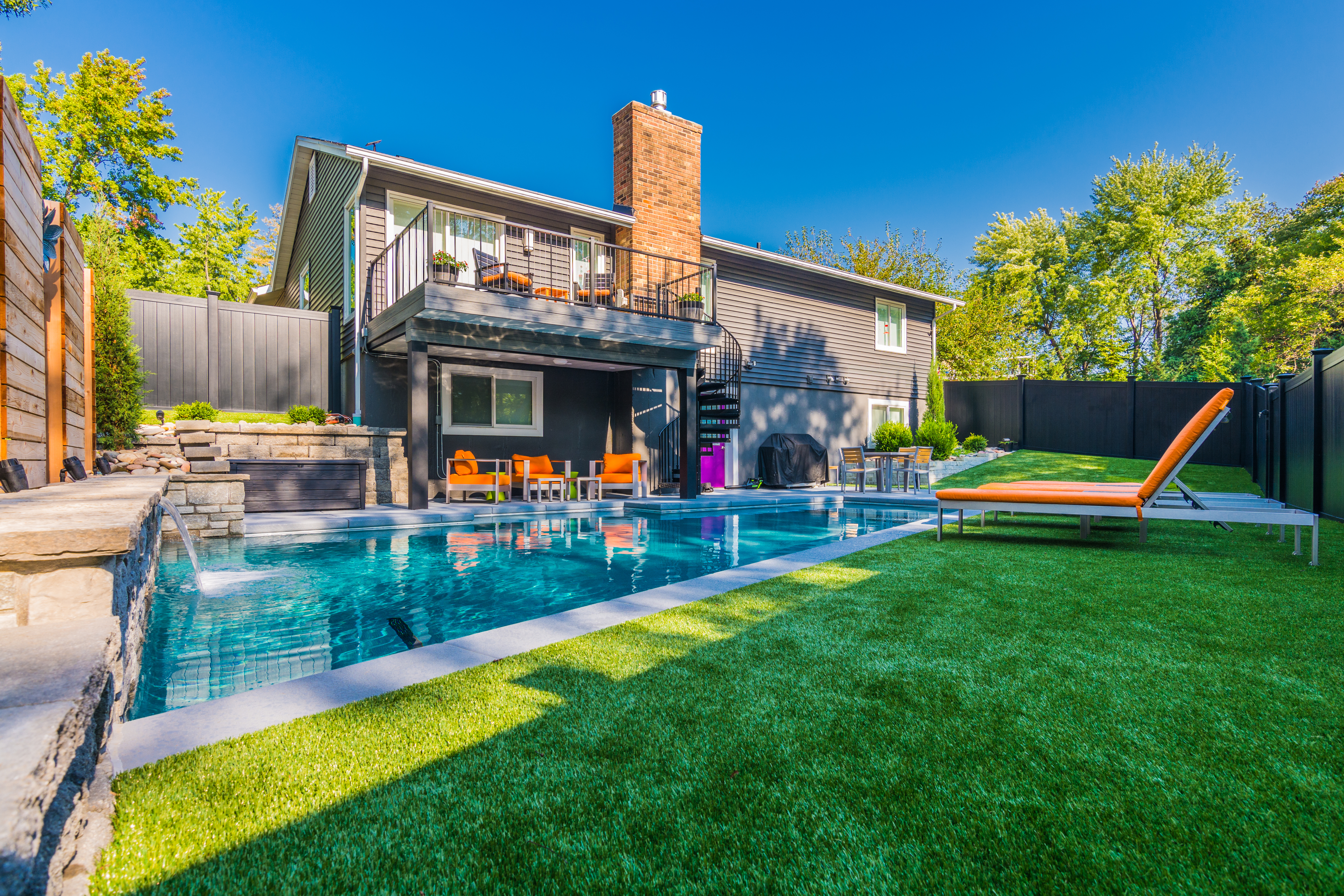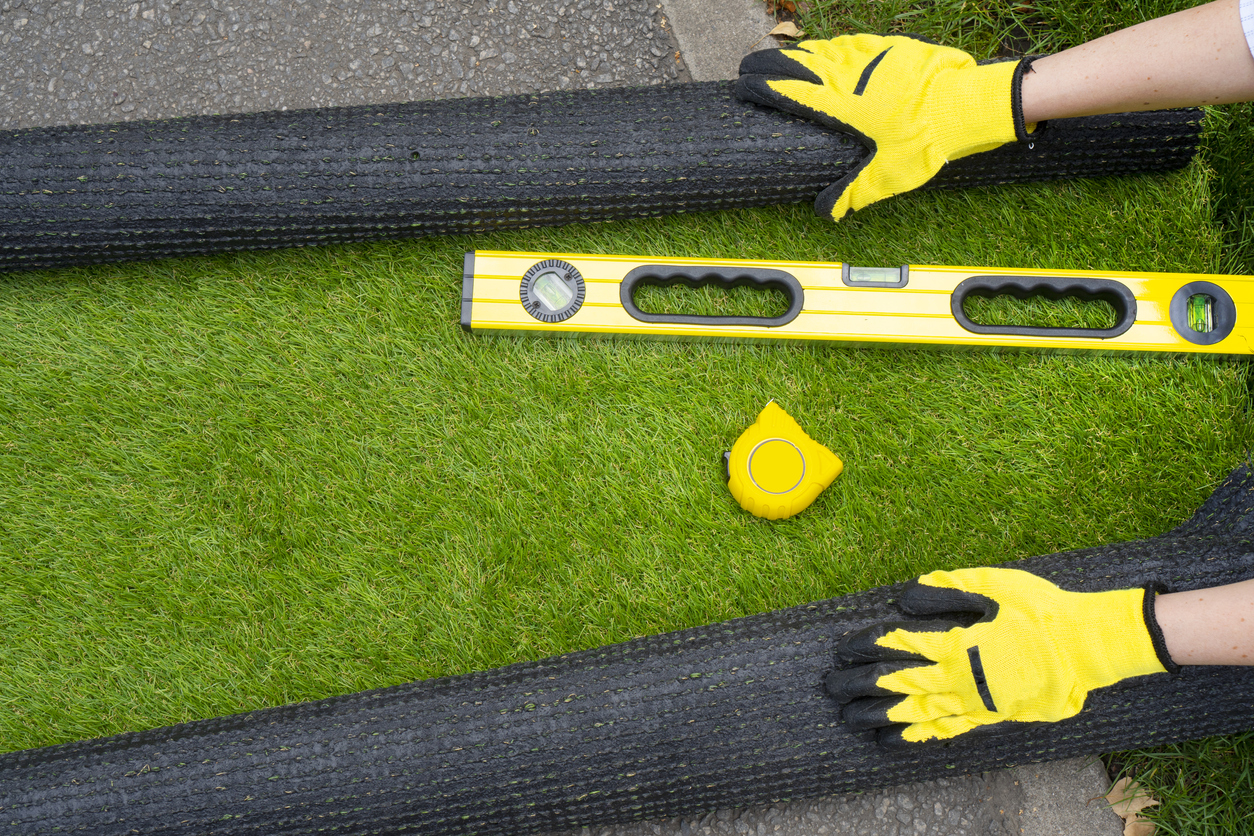
As autumn quickly winds to a close here in St. Louis, the natural landscape is rapidly transforming. The colorful leaves and brilliant green grass have already all but disappeared for the season, and soon we'll be left with only the dull, drab shades of winter to get us through the next several months. Unless of course you're one of the many St. Louis homeowners who have opted to replace your living lawn with artificial grass. As with most things, there are both pros and cons that go along with synthetic turf. If you're a St. Louis homeowner who's considering making the switch, here are some important things to consider before you go ripping up the sod.
1) It's ALWAYS green.
Unlike real grass that browns in the winter months, artificial grass stays green year-round. While early versions of synthetic turf were very noticeably fake, it’s now available in a wide variety of blade lengths, colors, and textures and looks and feels so realistic that it can fool even the most discerning onlookers. No matter what the season or weather conditions here in St. Louis, you can rest assured that your artificial grass will remain aesthetically pleasing.
2) It's durable and long-lasting.

The materials used in making modern synthetic grass are extremely durable and able to withstand almost anything, including most pests and even persistently digging canines. For this reason, artificial grass is very popular among pet owners. It’s also exceptionally stain-resistant, fade-resistant, and won’t fray at the edges. Although it may require some repairs over time due to regular wear and tear, high-quality synthetic grass typically lasts around 15 years before needing to be replaced.
3) It's very low maintenance (compared to traditional grass).
Compared to live grass that requires consistent watering and upkeep, artificial grass requires very little maintenance. There’s no need to water or mow, meaning that you’ll save precious time and conserve water. Plus, synthetic turf doesn’t need fertilizer or pesticides to keep it looking good, so it’s safer for your family and pets as well as for the environment. Homeowners will need to replace the infill material every few years to keep it looking its very best, but this is a relatively simple and inexpensive process.
4) It’s perfect for pool areas and areas that aren’t easily accessible. 
Swimming pools are customarily surrounded by concrete or stone patios, but some St. Louis homeowners prefer the more natural appearance of grass in lieu of hardscaping. In these instances, synthetic turf is a great choice, as it’s less messy and dangerous than real grass. It doesn’t need to be mowed, so there’s no chance of clippings blowing into the pool. Artificial turf also drains water away from the surface, so it stays drier than live grass, therefore reducing the chance of slips and falls. And because there’s no dirt involved, homeowners with synthetic grass need not worry about people and pets tracking mud into their pools or homes.
Synthetic turf is also a fantastic option for areas that are difficult to reach with a lawn mower. Small sections that are separated from the main lawn by hardscaping, narrow side yards, underneath swing sets and trampolines, and the small spaces between segmented pavers are just a few examples of ideal areas for artificial grass.
5) It creates a softer, safer surface.
No matter how dutifully you tend to your St. Louis living lawn, dips and humps will undoubtedly still occur. While this may not seem like a huge problem, such irregularities can pose a hazard to pets, playing children, and visitors who are unfamiliar with the terrain. Artificial turf creates a smooth, even surface, thus minimizing the risk of injury.
1) High installation cost.

On average, St. Louis homeowners can expect to pay between $6 and $12 per square foot for synthetic grass. This is quite a bit more than sod, which typically costs around 40 cents per square foot. However, it’s important to remember that high-quality artificial grass has around a 15-year lifespan, so installation costs should be viewed as a long- term investment that will pay for itself over time. St. Louis homeowners with synthetic grass also save money by avoiding the high maintenance costs associated with natural lawns.
2) It gets warmer than natural grass.
Most artificial turf is primarily made of plastic, meaning that it absorbs heat and can therefore get quite warm when in direct sunlight. This can obviously be a concern for St. Louis homeowners with pets and children who are likely to run barefoot outside in the summer. Thicker blades of synthetic grass tend to withstand heat better than the thinner blades, so homeowners who are worried about surface temperatures should opt for a variety with broader blades.
3) It’s not completely eco-friendly.
Although it’s often praised for its water-saving benefits, artificial grass has its own environmental drawbacks. It’s a petroleum-based product that inevitably creates waste and pollution during the manufacturing process. Also, only some of the materials used in synthetic grass are recyclable. Because of the time and equipment needed to separate these materials during the recycling process, most artificial turf eventually ends up in a landfill.
Whether you’re considering replacing all or part of your lawn with synthetic turf, Flora can help! For more information or to request an estimate for your own home, please call 636-728-1520 or fill out our online contact form today!